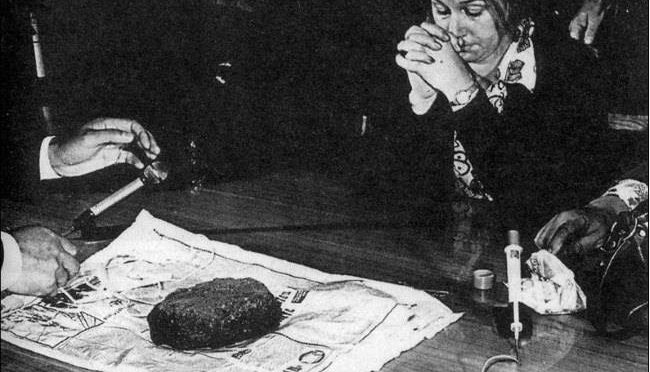As he sets up various examples of how societal critiques are manifested in the plots of Star Trek episodes broadcast during the Cold War era, Nicholas Evan Sarantakes makes a convincing argument as to how this popular science-fiction television show aligned itself to respond to changes in US foreign and domestic policy. A powerful example of how the creators of Star Trek attempted to create an allegorical commentary of US policy as they saw it can be seen in the episode,”The Doomsday Machine,” which serves as a reaction to US involvement in the nuclear arms race. In this episode, the crew on the Enterprise is horrified to find their fellow starship, the USS Constellation, in a severely dilapidated condition due to a confrontation with a mysterious and ostensibly indomitable machine capable of destroying entire planets. The only survivor that they find remaining on this starship is Commodore Decker, who recklessly and futilely tries again to fight this planet-killing machine the moment he gets on board the Enterprise. Following his failure, Decker sets off on a desperate suicide mission on a separate battleship to fight the machine, an attempt that, while unsuccessful in destroying the machine, proves promising as it mitigates the machine’s power. Seeing that this may be the only way to finally overcome this machine, Kirk sets the USS Constellation to self-detonate into the planet-killing machine. Playing on the irony of using a bomb to counteract another deadly bomb, this episode sends out the message, rather directly, that “nuclear weapons must never be used in the defense the United States or any other country” because they have the power to “destroy the planet, including the country that used them.”
We can see through the example of Star Trek that science fiction/fantasy writing hold the power to come face-to-face with the most controversial issues at the time of their publication. In general, such writing is easily dismissed by the public and academics as merely fanciful, non-substantive imaginings that are not corroborated by any fact. Taken with this attitude, it is much easier to not take offense to the stance or perspective it may be advocating, however polemical it may be. This genre creates an avenue for the viewer or reader to engage in ruminating on perspectives and issues they themselves may not be comfortable with by opening up a new world before their eyes, one in which they can let go of their intellectual inhibitions. An example of science fiction that uses this viewer experience to its advantage is the 1997 film, Gattaca, which addresses the bioethics of the genetic engineering of humans in the context of a society driven by eugenics. This film serves as an example of the extent to which science fiction can be ahead of its time in the topics it decides to address.

